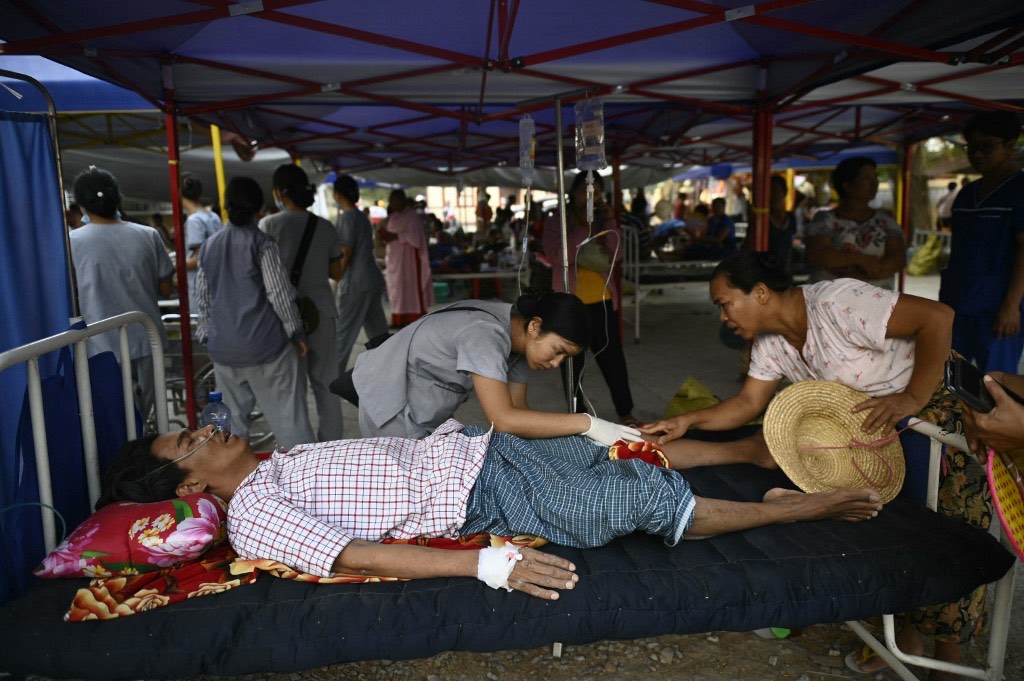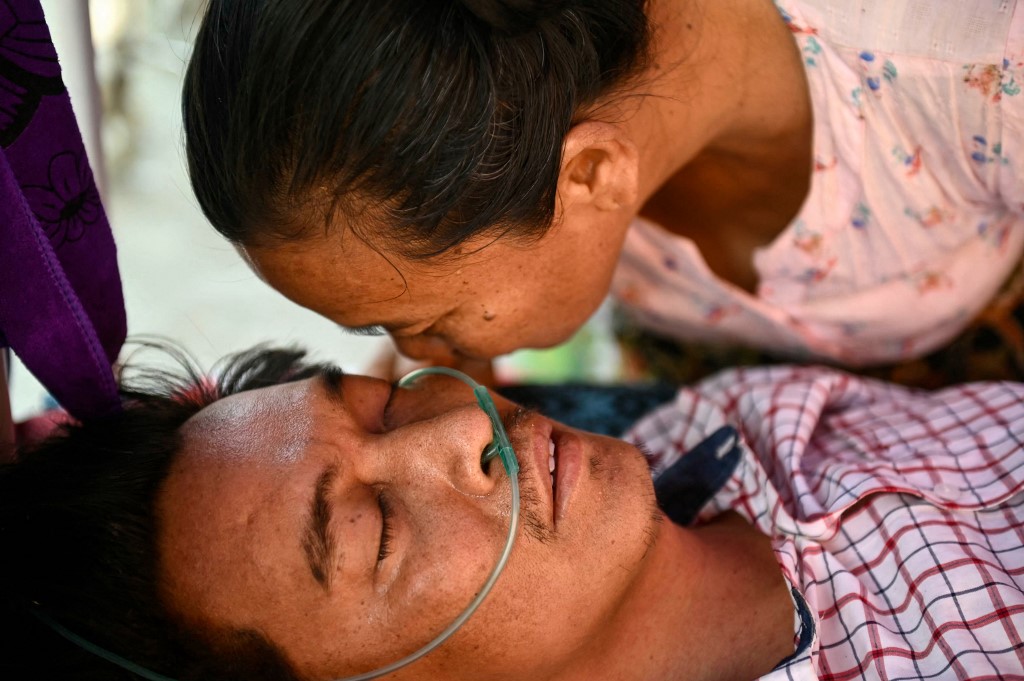Man shares how he survived being buried alive for five days in Myanmar's earthquake
Entombed under his hotel bed for five days in the debris, two things enabled teacher Tin Maung Htwe to survive Myanmar's devastating earthquake: old school lessons and his own urine.
The primary school headmaster was on a training course in Sagaing, the closest place to the epicentre, when the 7.7-magnitude earthquake struck.
The 47-year-old remembered a decades-old school lesson to shelter under a bed if the world starts to shake.
"As soon as I went under the bed, the whole hotel fell down and was blocked. All I could afford was to say 'Save me,'" he said.
"I was shouting 'Save me, save me.'"

The Swal Taw Nann guesthouse where he was staying was reduced to a pile of bricks and twisted metal strips, the broken shell of its top storey resting on the remains of those below, and Tin Maung Htwe in a ground floor room underneath it all.
"I felt as though I was in hell," he said weakly, an oxygen tube running to his nose and two intravenous drips into his reduced frame.
"My body was burning hot and all I needed was water. I couldn't get that water from anywhere."
"So I have to refill the water my body needed with fluids coming out of my body."
'I am free'
The intensity of destruction in Sagaing, closer to the epicentre, is far higher than in neighboring Mandalay, with a much greater proportion of its buildings reduced to piles of debris.
Great gouges have been opened up in the main road towards it—jamming traffic and hampering those trying to help the victims—and the Ava bridge across the Irrawaddy linking the two cities is down, one end of six of its 10 spans resting in the placid waters.
Residents said the Myanmar Red Cross were recovering bodies from the site and were not expecting to find anyone alive when they located him, and a Malaysian rescue team was called in to extract him.
One of eight siblings, his sister Nan Yone, 50, was one of several of his relatives watching and waiting as they worked at the site.
"I can't describe it," said Nan Yone of his rescue on Wednesday.
"I was dancing, crying, and beating my chest because I was so happy."

When he arrived at Sagaing's main hospital he gave her a thumbs-up and told her: "Sister, I am very good."
"His will is very strong and I think that is why he survived," she said on the day he was rescued.
As she spoke nurses tended to her semi-conscious brother on a outdoor gurney, his head lolling occasionally from side to side.
No one is being treated indoors at the facility, for fear of an aftershock wreaking more havoc.
"I am glad I am free now," Tin Maung Htwe told AFP.
"I wouldn't be able to do anything if I was dead. I didn't die so now I can do whatever I wish."
He wants to go back to his work as a schoolteacher. But he added: "I am considering becoming a Buddhist monk."


